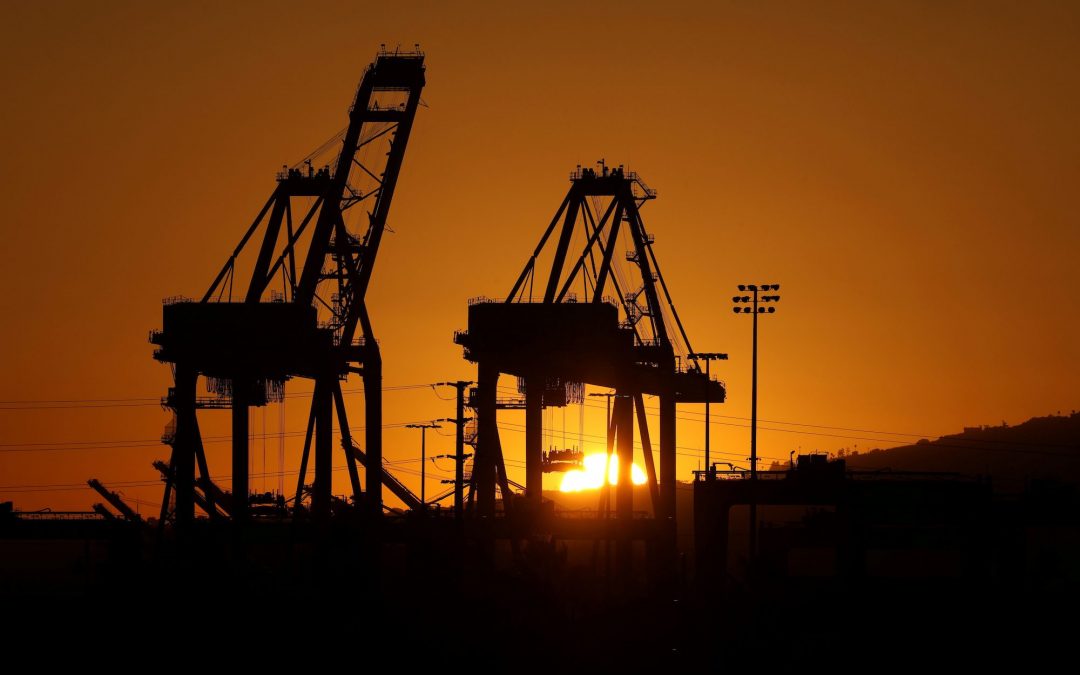Employers at West Coast ports at the center of the U.S. supply-chain crisis released a study extolling the benefits of automation a week before the start of labor talks where the issue is set to feature.
Paid hours at the two automated terminals in the San Pedro Bay complex — which includes the ports of Los Angeles and Long Beach — have increased 31.5% since 2015. That’s more than twice the rate at the 11 non-automated terminals, according to the study led by the University of California at Berkeley professor Michael Nacht published Monday.
Since 2019, automated terminals — which have software-assisted cranes, autonomous vehicles and digital checkpoints among other things — have processed containers twice as quickly as conventional ones.
“Contrary to the ILWU’s concerns, automation at San Pedro Bay ports has added work, not come at its expense,” Nacht and co-author Larry Henry wrote, referring to the International Longshore and Warehouse Union. “Higher cargo throughput will create port-related jobs and add employment throughout the supply chain. Conversely, failing to adapt threatens to drive cargo to other ports, with a cascading loss of jobs on the docks and throughout the regional economy.”
The study was commissioned by the Pacific Maritime Association, which serves as a labor broker for carriers and terminal companies at 29 West Coast ports, and has long fought for their right to automate.
Automation is “the key to long-term survival, long-term competitiveness,” PMA Chief Executive Officer Jim McKenna said in an interview last month. “If we do nothing, we’re done.”
Talks between the PMA and the ILWU to hammer out a new labor contract for 22,000 West Coast dockworkers will start on May 12. Automation has gained space in ILWU-PMA contracts over time, with the 2008 pact agreeing to allow fully mechanized and robotic-operated marine terminals.
The ILWU “has accepted the terminals’ right to automate, but, worried about job losses, it has resisted efforts to introduce the technology,” the study’s authors wrote.
As the parties come together to negotiate the contract set to expire on July 1, workers are seen as having additional leverage as carriers report record profits in a tight market. Also, the twin ports have moved unprecedented amounts of cargo amid the supply-chain crisis.
“The bottom line is that automation has destroyed longshore jobs,” he said in a statement. “The increased productivity that the PMA is claiming at the two automated terminals has meant less work at other terminals and an overall loss of employment for longshore workers. We haven’t seen an overall increase in productivity at the ports, just a shell game to mask the human cost of job destruction.”
Long Beach Port Executive Director Mario Cordero in an interview last week pushed back at the notion of automation as the key to improving productivity at the ports. He said the supply chain will only become more efficient if operations start running around the clock, seven days a week.
“I don’t see automation as a major impediment to get to the efficiency we need to have,” Cordero said. “For me, the major impediment is the lack of turning this supply chain to a 24/7 framework. The model that we’ve had of working essentially, gates open from 8 a.m. to 6 p.m. and some night gates, that model does not work when you have 20 million containers.”
Only four U.S. ports currently have automated terminals, including Los Angeles and Long Beach, which handle about 42% of all U.S. containerized trade with East Asia. The twin hubs both rank in the bottom 25 of the World Bank and IHS Markit’s 351-member Container Port Performance Index.
Source: gCaptain






